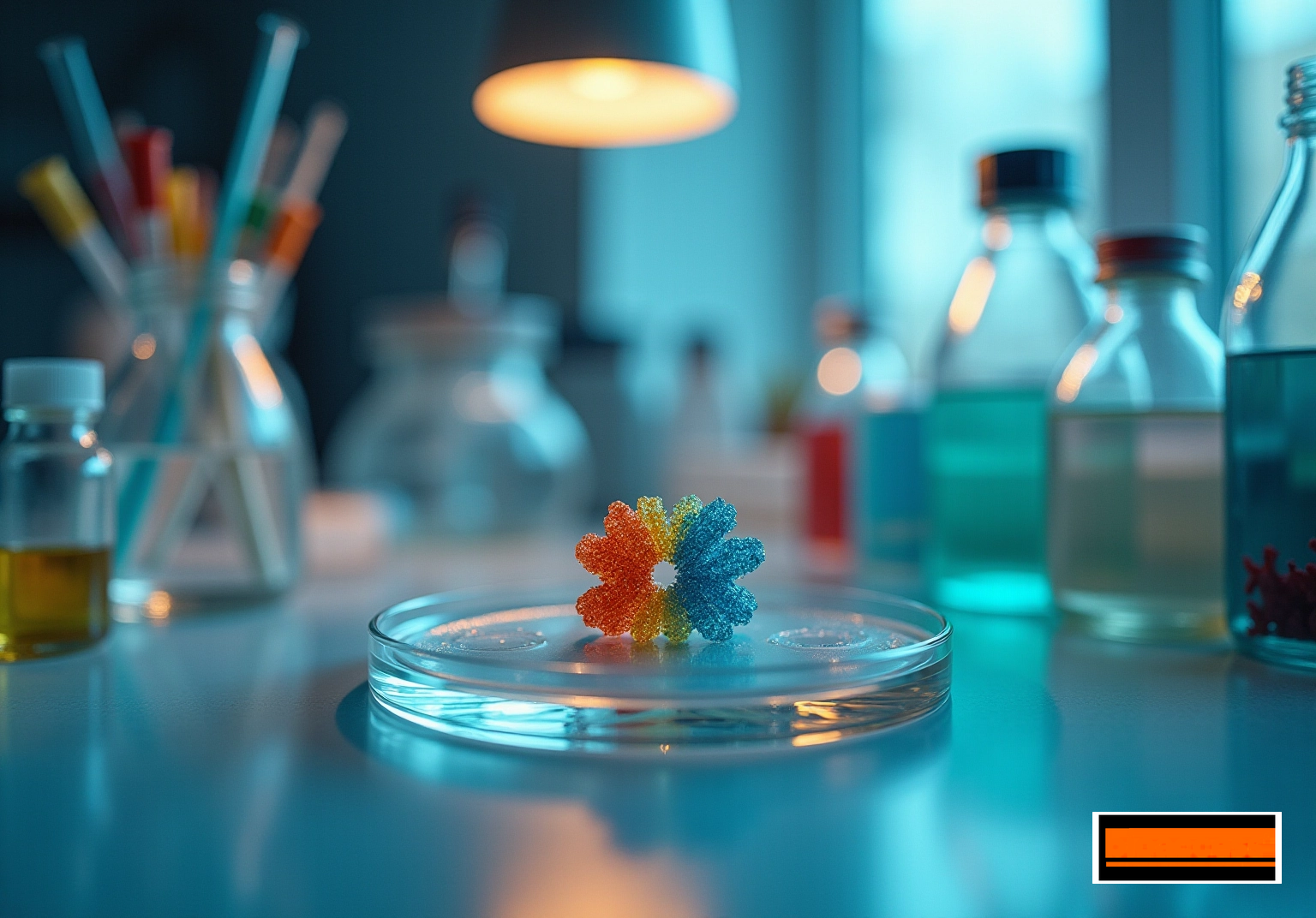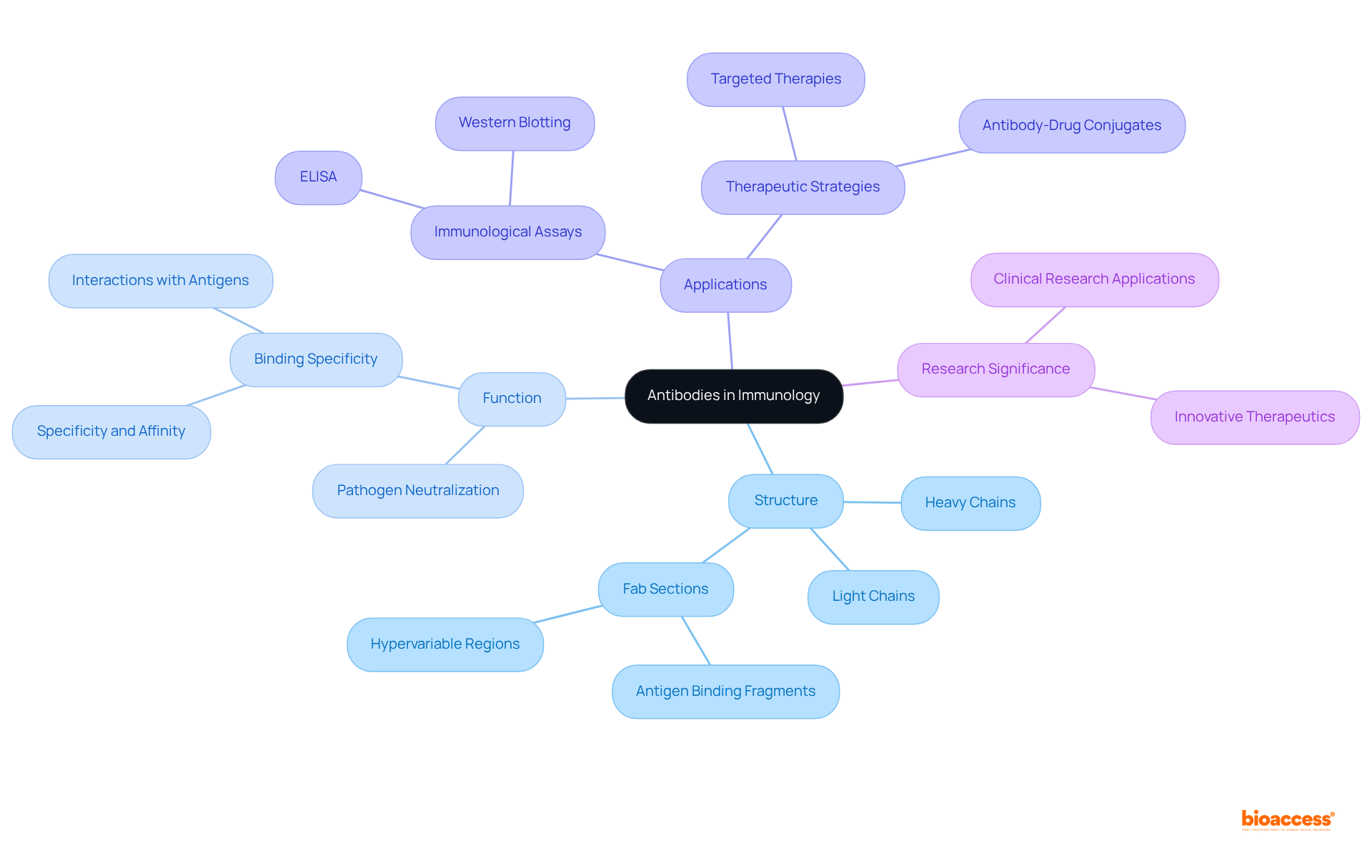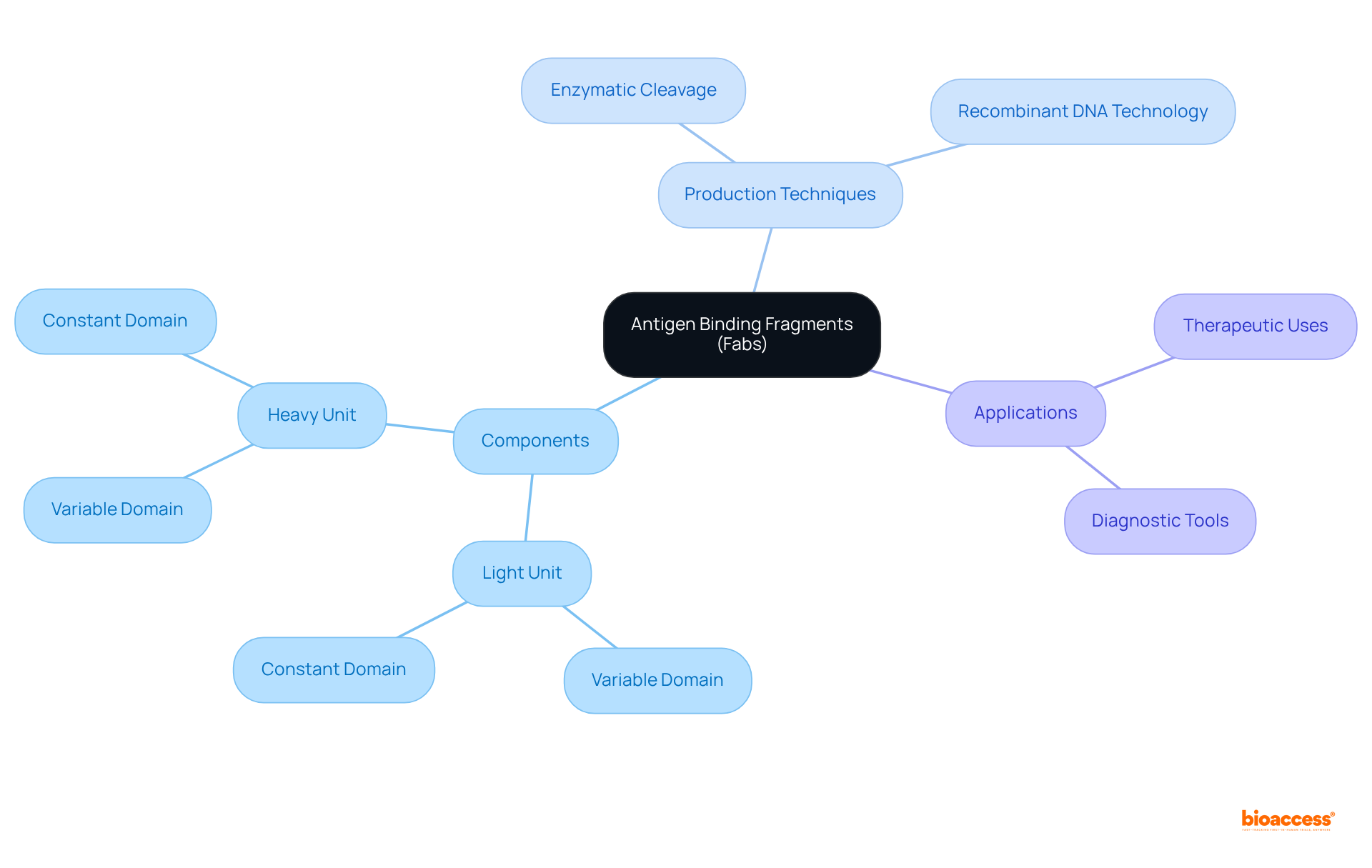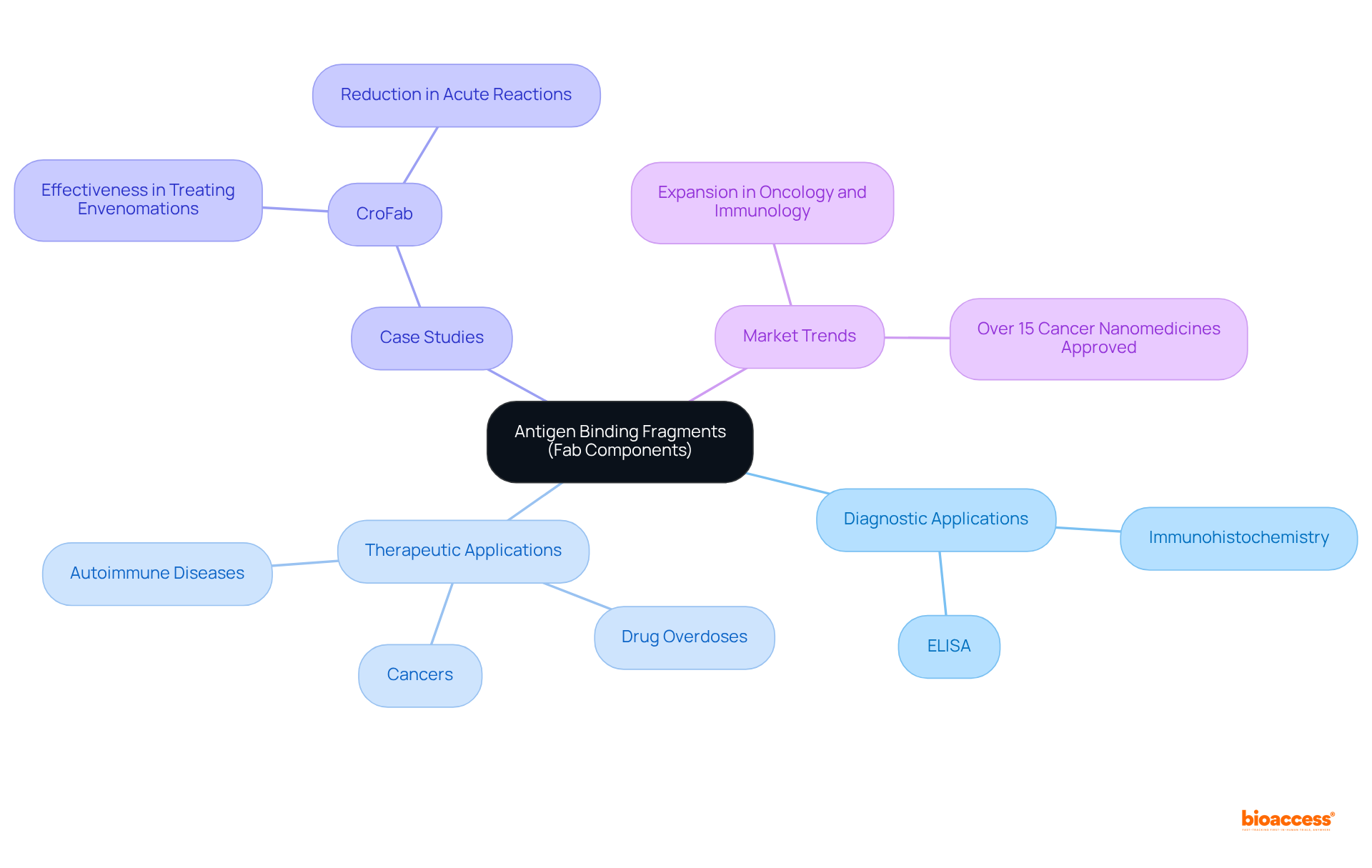


Antigen binding fragments (Fabs) are specialized components of antibodies that play a crucial role in recognizing and binding to specific antigens. This capability renders them invaluable in therapeutic and diagnostic applications, particularly within the clinical research landscape.
The article emphasizes:
Furthermore, it addresses the challenges encountered in their development and production, underscoring the need for collaboration to overcome these hurdles and advance the field.
Antigen binding fragments, or Fab regions, are pivotal in the immune system, specifically binding to antigens and thereby facilitating the body’s defense mechanisms. As their applications in targeted therapies, diagnostics, and vaccine development expand, understanding the structural characteristics and functional importance of these fragments becomes increasingly vital.
The journey from laboratory research to clinical application, however, is fraught with challenges. This raises an essential question: how can we fully harness the potential of Fab fragments while navigating the complexities of their development?
Antigen binding sections, commonly referred to as Fab regions, are integral components of immunoglobulins, specifically designed to attach to distinct antigens. Each Fab portion comprises one light chain and one heavy chain, forming a structure that includes one variable region and one constant region. This configuration allows Fab sections to maintain the specificity and affinity of the original protein while being smaller and more versatile for various applications in research and therapy. The molecular weight of a typical Fab unit is approximately 50 kDa, making them suitable for scenarios where full-sized proteins may prove cumbersome or less efficient.
The market for Fab portions is witnessing substantial growth, propelled by their applications in targeted therapies, diagnostics, and vaccine development. As of 2025, at least eight Fab molecule drugs have received global approval, including notable examples such as:
This underscores their therapeutic potential. Current research focuses on optimizing Fab segment engineering to enhance efficacy and reduce immunogenicity. Ongoing studies are exploring innovative production techniques, such as Sino Biological's HEK293/CHO cell transient transfection technology, capable of producing high-quality Fab antibodies in as little as 3-6 weeks.
Recent case studies highlight the successful application of Fab portions in various therapeutic contexts, reflecting the growing recognition of Fab portions as a vital component in contemporary immunotherapy. However, it is crucial to acknowledge that the development of Fab portions is not without challenges; for instance, 20 programs for Fab portions have been discontinued, illustrating the complexities involved in bringing these therapeutics to market. This balanced perspective on the current state of Fab component research and development emphasizes both their potential and the persistent challenges that must be addressed.

Antibodies serve as crucial components of the immune system, responsible for identifying and neutralizing pathogens. Central to this role are the antigen binding fragments, known as Fab sections, which are vital for recognizing specific antigens present on pathogens. Each immunoglobulin consists of four polypeptide chains: two identical heavy chains and two identical light chains, with a combined weight of approximately 150 kDa. The hypervariable segments within the antigen binding fragment (Fab) sections of antibodies dictate their specificity, allowing for unique binding to epitopes on antigens. This precise binding is essential for an effective immune response, allowing the body to target and eliminate a wide range of pathogens, including bacteria and viruses.
Furthermore, the antigen binding fragment portions are extensively utilized in various immunological assays, such as ELISA and Western blotting, where they play a key role in detecting and quantifying antigens in biological samples. Recent research underscores the significance of these components in enhancing therapeutic strategies, showcasing their potential in targeted therapies and diagnostics. As noted by experts, the antigen interacts with the antigen binding fragment of an antibody, specifically engaging both the VL and VH variable domains, which facilitates the specificity and affinity of the binding process.

Antigen binding fragments (Fabs) consist of two essential components: the light unit and the heavy unit. Each link is divided into a variable domain, crucial for antigen recognition and binding, and a constant domain that supports the structural integrity of the piece. The variable regions of both chains interact to form the paratope, the specific site on the immune protein that engages with the antigen. This intricate structure enables the antigen binding fragment portions to demonstrate remarkable specificity and affinity for their target antigens.
Antigen binding fragments, known as Fab portions, can be generated through various techniques, with enzymatic cleavage of full-length antibodies being one of the most prevalent methods. This approach allows for the creation of components with tailored attributes designed for specific applications, enhancing their utility in therapeutic and diagnostic contexts. For instance, research indicates that the choice of light type—kappa or lambda—significantly influences pairing preferences with heavy types, thereby affecting the overall efficacy of the Fab portion. Specifically, 1,157,977 pairs were associated with kappa light chains, while 743,982 pairs were linked to lambda light chains, underscoring the importance of light chain isotype in Fab component production.
Moreover, advancements in recombinant DNA technology have improved the production efficiency of Fab components, yielding higher outputs and more consistent quality. For example, the crystal arrangement of the Fab antibody portion of the anti-osteocalcin antibody KTM219 was refined to a resolution of 1.90 Å, demonstrating the precision achievable in Fab portion production. These developments underscore the growing significance of antigen binding fragments (Fab components) across a range of biomedical applications, including targeted therapies and diagnostic tools.

Antigen binding fragments, known as Fab components, are increasingly recognized for their versatile applications in medical research and therapeutic contexts. These components are pivotal in diagnostic assays, such as enzyme-linked immunosorbent assays (ELISAs) and immunohistochemistry, due to their specificity in binding target antigens. In therapeutic settings, the antigen binding fragment portions are being explored as alternatives to full-length antibodies for various conditions, particularly autoimmune diseases and cancers. Their smaller size enhances tissue penetration and reduces immunogenicity, making them ideal for targeted therapies.
For example, Fab portions have demonstrated effectiveness in managing drug overdoses and envenomations by neutralizing toxins through specific binding. The Crotalidae Polyvalent Immune Fab (CroFab) serves as a significant case study, illustrating the efficacy of the antigen binding fragment components in treating envenomations, with a notable reduction in acute reactions compared to traditional therapies. Recent advancements are also focusing on the development of bispecific antibodies utilizing antigen binding fragments, which can target multiple antigens simultaneously, thereby improving therapeutic outcomes.
The market for Fab portions in therapeutic applications is expanding, fueled by their potential to transform treatment strategies in oncology and immunology, with over 15 cancer nanomedicines already approved globally. As research continues to reveal their capabilities, the antigen binding fragment is set to play a crucial role in the future of targeted therapies.

Antigen binding fragments (Fabs) signify a crucial advancement in immunology, functioning as specialized elements that augment the specificity and efficacy of immune responses. These smaller, versatile fragments not only preserve the binding capabilities of full-sized antibodies but also provide substantial advantages in diverse therapeutic and diagnostic applications, establishing them as essential tools in contemporary medicine.
This article has delved into the structure, function, and applications of Fab regions. Their unique molecular configuration facilitates precise antigen recognition, and their increasing market presence in targeted therapies highlights their potential, evidenced by successful implementations in treating autoimmune diseases and cancers. Additionally, the challenges encountered in their development underscore the complexities inherent in fully harnessing their therapeutic potential.
As research progresses, the significance of antigen binding fragments in enhancing targeted therapies and improving diagnostic accuracy cannot be overstated. Embracing the innovations surrounding Fabs not only advances current medical practices but also lays the groundwork for future breakthroughs in immunotherapy. The ongoing exploration of their capabilities encourages researchers and practitioners alike to reflect on the transformative impact these fragments could have on patient care and treatment outcomes.
What are antigen binding fragments (Fab regions)?
Fab regions are integral components of immunoglobulins designed to attach to distinct antigens. Each Fab portion consists of one light chain and one heavy chain, featuring one variable region and one constant region.
What is the molecular weight of a typical Fab unit?
The molecular weight of a typical Fab unit is approximately 50 kDa.
Why are Fab regions considered versatile for applications in research and therapy?
Fab regions maintain the specificity and affinity of the original protein while being smaller, making them more efficient and suitable for various applications compared to full-sized proteins.
What is driving the growth of the Fab market?
The growth of the Fab market is driven by their applications in targeted therapies, diagnostics, and vaccine development.
Can you provide examples of approved Fab molecule drugs?
As of 2025, at least eight Fab molecule drugs have received global approval, including Ranibizumab for wet age-related macular degeneration and Certolizumab pegol for autoimmune conditions.
What current research is being conducted on Fab segments?
Current research focuses on optimizing Fab segment engineering to enhance efficacy and reduce immunogenicity, as well as exploring innovative production techniques.
What production technology is being utilized for Fab antibodies?
Sino Biological's HEK293/CHO cell transient transfection technology is being utilized, capable of producing high-quality Fab antibodies in as little as 3-6 weeks.
What challenges exist in the development of Fab portions?
The development of Fab portions faces challenges, as evidenced by 20 programs for Fab portions that have been discontinued, highlighting the complexities involved in bringing these therapeutics to market.